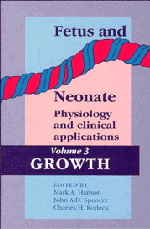13 - Assessment of fetal well-being in growth-retarded fetuses
from Part III - Clinical applications
Published online by Cambridge University Press: 04 August 2010
Summary
Introduction
At present, there are many ways of assessing fetal health. When comparing the various tests it becomes obvious that no one is superior, but that all contribute to a better understanding of the actual fetal condition. Combination of tests, therefore, gives more information than relying solely on one assessment technique. When interpreting the test results, it is possible to combine them into one scoring result (biophysical profile score; ‘Apgar score’ in utero) or to analyse them separately and to relate the individual results to the stage in the process of deterioration of the fetal conditon. The latter procedure is more informative than a combined score, especially in intrauterine growth retardation (IUGR) in which there is a specific sequence of changes occurring with respect to the various assessment tests.
In this chapter the diagnostic value of the various (non-invasive) assessment techniques is discussed in the light of pathophysiological changes occurring with progressive deterioration of the condition of the IUGR fetus. Special attention is paid to the issue of whether changes in biophysical variables are a sign of fetal adapatation or of organ damage. The interpretation of some of the tests is discussed. Finally, the question as to the timing of delivery of the IUGR fetus is addressed.
Changes in blood velocity waveforms, fetal movements, amniotic fluid volume and fetal heart rate patterns
Figure 13.1 shows the rank order in which changes occur in the various assessment tests, with progressive deterioration of the condition of the IUGR fetus.
- Type
- Chapter
- Information
- Fetus and Neonate: Physiology and Clinical Applications , pp. 327 - 346Publisher: Cambridge University PressPrint publication year: 1995



